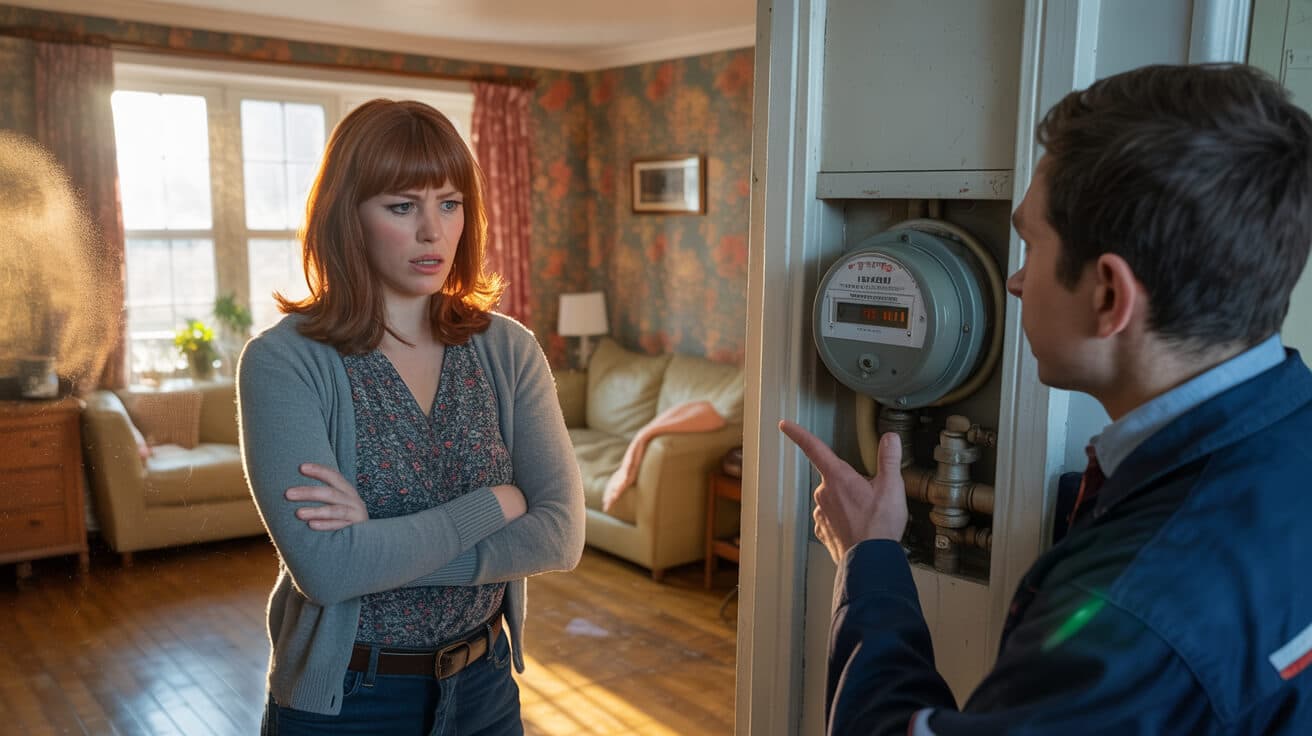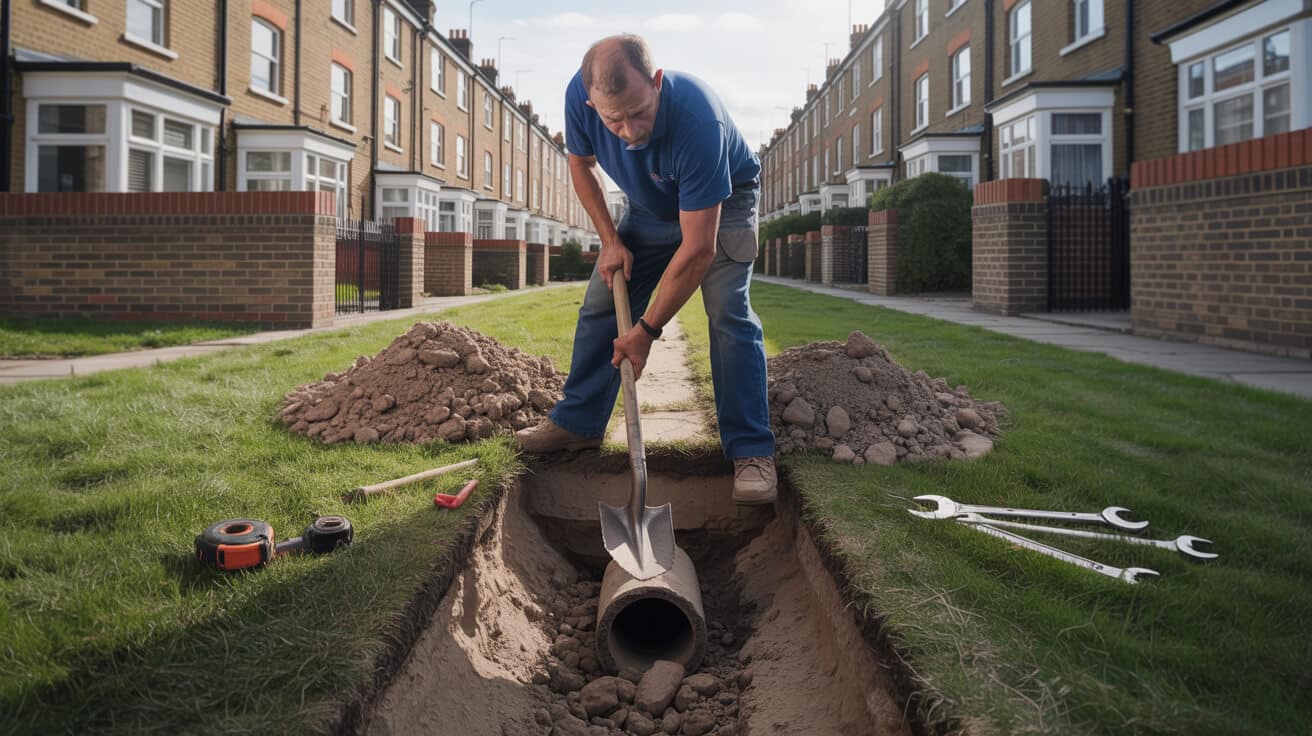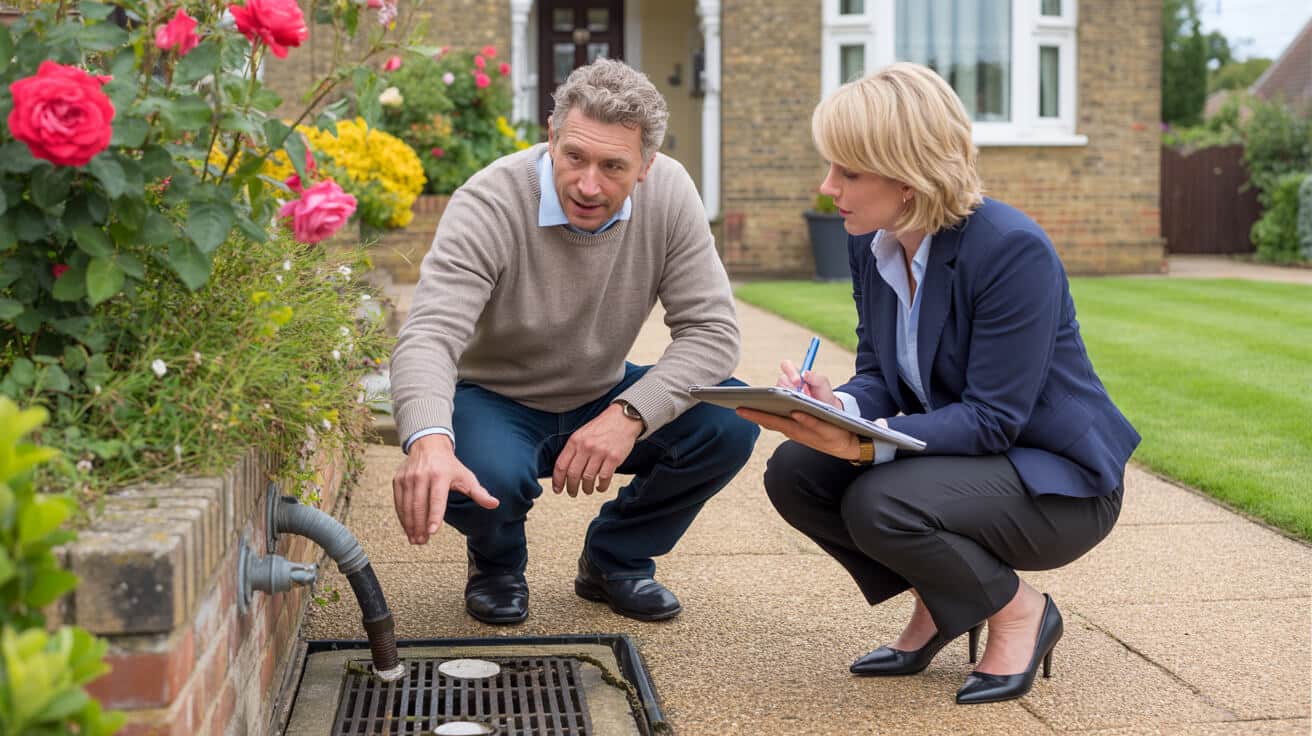 How Long Does a Bathroom Renovation Take
How Long Does a Bathroom Renovation Take

How Long Does a Bathroom Renovation Take in the UK? (Real Timelines, Real Risks)
A bathroom refit is never just a messy week with the tiles up and the loo out of action. It’s the single room disruption that exposes every weak link in your supply chain, your planning, and, frankly, your patience. Whether you’re a homeowner itching for an upgrade, a landlord with compliance on your mind, or a facilities manager under pressure to keep the block up to code, every extra day a bathroom stays out of commission becomes a real cost—tenants on the phone, void days building, compliance questions stacking, and that low-level anxiety about what’s lurking under the floor.
Every extra day in bathroom limbo chips away at your peace of mind. A mapped schedule is the difference between control and chaos.
Most UK bathroom renovations promise a timescale that fits the contractor’s availability—not the reality of concealed pipework, lead times on fixtures, or the unexpected, like rotten floors and hidden leaks. In this guide, you’ll get the actual timelines, the real-world reasons refits run over, and a framework to avoid falling for the usual traps. Time truly is money—and reputation—when it comes to bathroom projects. Let’s put you on the front foot.
What Factors Have the Biggest Impact on a Bathroom Renovation Timeline in the UK?

No property’s the same and not a single refit runs exactly to plan—anyone who claims otherwise is selling fantasy, not plumbing. The real length of your bathroom overhaul depends less on “paint-by-numbers” project labels and more on the details: the old system’s quirks, the scope creep that creeps in, the specifications you freeze early, and what your plumber finds after the suite’s been stripped back to brick.
Scope: The Fast Lane versus the Scenic Route
- Like-for-like swaps: —think new taps, basin, or WC—can often be done in 1–3 working days, assuming every required part is on site and nothing needs moving.
- Upgrading fixtures with *minor tiling, painting, or a smart thermostat* takes 3–7 days—a straight shot, so long as finishes are chosen and deliveries land on time.
- Full rip-outs, layout swaps, new showers, or underfloor heating: usually need 10–21 days—sometimes longer if you’re moving points, tackling rewires, or running into “heritage” plumbing from a time before metric rules.
- If your property is old, has awkward access, or needs structural fixes, these durations can easily double, especially when uncovering water damage, wood rot, or (in tenanted lets) the need to phase work around occupancy.
| Renovation Type | Usual Duration | Typical Tasks Covered |
|---|---|---|
| Basic swap | 1–3 days | Taps, basin, WC change—no pipe reroute |
| Minor refresh | 3–7 days | Fixtures upgrade, patch tiling, painting, quick checks |
| Full instal | 10–21 days | Full strip, pipe run updates, new walls/floors |
| Layout/heat change | 21–45 days | Wetroom, UFH, major pipework, compliance signoff |
Moving anything under the floor or in the wall nearly always adds days—and in older properties can double the expected schedule.
Plumbing and Pipework: Where Schedules Get Blown
Upgrading a bathroom isn’t just swapping old for new. The moment you ask to move a basin from left to right, reposition the WC to the other end, or swap in a shower where only a bath’s ever been, you start a domino effect beneath the surface. Pipe runs need to be chased or rerouted, subfloor may need levelling, and what started as a face-lift now triggers sign-off from Building Control. In older buildings, expect the need for upgrades to meet Part G (hot water safety) and WRAS (water regulation) standards—these add both time and mandatory steps.
It’s rarely the tiles or suite that delay you—it’s the pipe runs and the layout you decide.
How Does Planning, Surveying, and Early Decisions Dictate the Schedule?
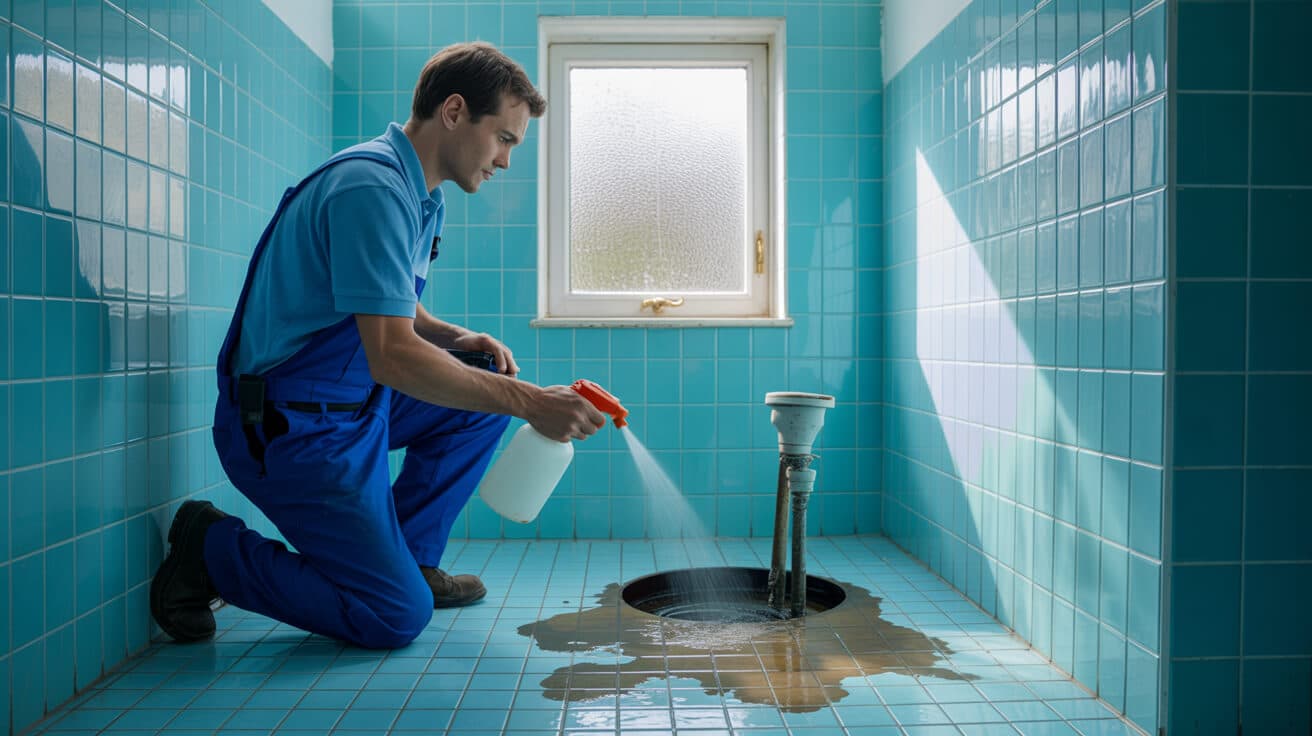
Here’s where most refits go better or worse than people expect: the planning phase. In pursuit of a quick start, it’s easy to skip a thorough site survey or to green-light works on a WhatsApp photo and an “it’ll be fine, mate” estimate. Delay seeds, right there.
Full Surveys: Where Fast Timelines Are Actually Won
Every competent installer starts with a detailed on-site survey. They:
- Trace pipework and isolation points.
- Measure proper ventilation and extraction path.
- Probe for hidden issues (black mould, legacy leaks, electrical faults).
- Document non-standard fixtures, walls, or access constraints.
For landlords and agencies, this process isn’t just wise; it’s your shield if regulators or insurers come knocking later. A photographic record plus a written, signed scoping becomes your evidence of diligence.
The fastest timelines start with the longest, most methodical survey—get it in writing, with photographs.
Change Your Mind, Change Your Timeline
It’s spec drift—not “bad luck”—that kills bathroom schedules. Each last-minute switch in tiles, taps, or fittings forces contractors to reorder, reschedule trades, and can impact compliance paperwork. According to UK trade data, more than half of overrun bathroom jobs trace directly to late product swaps. This is not “unlucky”—it is entirely owner-driven.
- Lock every major choice: before ordering parts or demolition.
- Confirm your mood board, visual palette, and product choices with your fitter.
- For live-in properties or your only bathroom, expect a *10–20% slip buffer* for unknowns.
Who and What Actually Keep a Bathroom Renovation on Track?

A bathroom refit moves no faster than its weakest swap: the missing tile delivery, the “didn’t show up” electrician, or the lost WRAS certificate. Yet, most overruns flag themselves in advance, if you know where to look.
Credentials and Scheduling: The Secret Weapon
- WRAS, WaterSafe, G3 certificates: Get proof that every plumber and installer holds current credentials. Without these, not only can you lose insurance—but you may be unable to legally let, sell, or mortgage the property.
- Phase-by-phase schedule with itemised line quotes: Every reputable company will spell out the stages (demolition, first fix, tiling, second fix, test, handover), with dates and a formal snagging window.
- Materials on site, up front: *No* contractor (worth a penny) begins demolition before every major part is delivered, checked, and photographed. “Surprise” delays? They’re typically back-ordered tubs or feature tiles that were “meant to arrive” last week.
Most unexpected delays are flagged in advance—if someone is honest about credentials and how much is actually on hand before they break ground.
What Rules Could Legally Derail Your Bathroom Project and How Do You Stay Compliant?

Bathrooms are inspected and regulated more than nearly any other domestic room bar the kitchen. UK law requires certain certificates, and missing just one can stop a payment, void home insurance, or kill your ability to sell or let the property. It’s more than paperwork—it’s your protection.
Building Regulations and Compliance: The Non-Negotiables
- Part G (Sanitation, Hot Water Safety): Any work on unvented cylinders or hot water pipework invokes G3 requirements—only certified fitters can sign off, and you need the document for your records.
- WRAS Approval: All fittings and pipework must meet WRAS criteria; unapproved products or instals may need rectification before property sale or letting.
- Part H (Drainage and Waste): Any soil pipe or main waste changes require correct sizing, venting, and access compliance.
- Building Control notification: Major works (layout, drainage, new underfloor heating) require notice, inspection, and sign-off.
Landlords and agents: you are on the hook for these; not the contractor. Hold final payment until every certificate is delivered and logged.
The Compliance Handover: No Excuses
The final folder must include:
- G3 and/or WRAS certification (where relevant).
- Building Control sign-off (structural, drainage).
- Complete photo set and warranty/full spec sheet.
Compliance is your insurance policy, and shortcuts almost always come back to haunt owners at the exact wrong time.
How Long Does a Bathroom Renovation Actually Take? Real-World UK Case Timelines

Forget the glossy showroom promises—here’s what competent, fully-certified jobs actually run:
| Project Type | Typical Duration | Scope |
|---|---|---|
| Tap/WC refresh | 1–3 days | Isolated repair; no pipe movement |
| Basic suite swap | 3–7 days | New basin, WC, bath, minor patch tiling |
| Tiling/layout change | 7–12 days | Full retile, pipe run shifts, wiring |
| Full instal | 14–30+ days | Old out, all new in, layout, full pipelines |
| UFH/wetroom | 21–45+ days | Pipe reroute, underfloor, full compliance |
- 1–2 weeks: Straight swaps with every item pre-delivered, dependable trades, and zero hidden issues.
- 3–5 weeks: Suite replacement with modest layout or major tiling, sometimes to increase rental value or add features.
- 4–8+ weeks: Wetroom, underfloor, full layout shift—standard for older homes or where access is complex.
A photo survey and written quote will get you closer to the truth than any ballpark guess. Delay starts with missing detail, not missing speed.
What Triggers Delays, and How Can You Proactively Avoid Bathroom Lag?
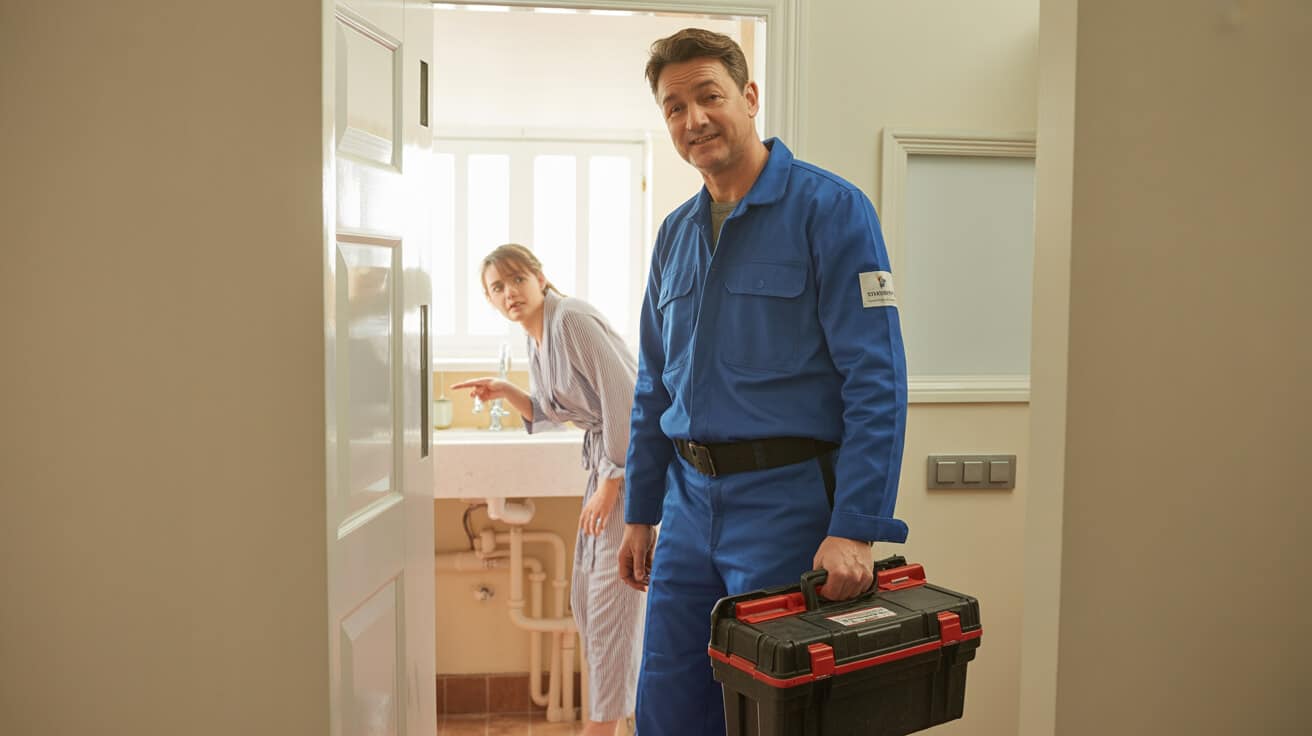
No experienced property manager blames timelines on “unpredictable” events. Delay almost always points to rushed decisions, unclear product choices, or skipped compliance steps.
Delay Triggers—Avoid Them, Build Around Them
- Spec Drift: Any material or finish swapped after quote locks in.
- Missed delivery or “special order” hang-ups: If it’s not present when you start, expect weeks of stasis.
- Compliance scheduling ignored: Forgetting to book Building Control or electrician before walls are closed up = pause button.
- Missing credentials: No valid WRAS, G3 or WaterSafe registrations = job cannot be legally signed off.
Proactive Steps for On-Time, Stress-Free Delivery
- Lock all final choices (with a visual sign-off) *before* placing orders or booking installers.
- Secure written, up-to-date credentials checks for every fitter, plumber, tiler—before work starts.
- Make sure all products, by part number, are onsite and accounted for before any demolition.
- Align every compliance visit with critical path tasks—don’t play catch-up mid-fit.
- Pre-schedule the handover, snag, and aftercare call, and tie payments to completion milestones.
The best time to prevent unpredictable delays is before demolition starts, when everything feels under control.
What Does a Proper Handover and Aftercare Look Like in a UK Bathroom Renovation?

Here’s where things quietly fall apart for most landlords and property managers—with consequences no tile brochure advertises. A “finished” bathroom isn’t done until every compliance document, demonstration, and warranty is received and logged.
Gold-Standard Handover—Insurance and Asset Protection
- Certification pack: G3/WRAS/WaterSafe, user manuals, guarantees, before-and-after photographs.
- On-site demonstration: Control run-throughs—stopcock, isolator, heating controls, leak protocol.
- Snag and rectify log: List any outstanding work or minor fixes, with a date and signature before any final balance.
- Aftercare contact and escalation policy: Direct help number, response time, and steps for urgent or maintenance requests—agents, document these for your file.
The job is only finished—and your property only fully protected—when you hold every compliance document and know exactly who to call when the unexpected crops up.
What Distinguishes Plumbers 4U’s Timeline, Compliance, and Peace-of-Mind Guarantee?
Bathroom overhauls fail due to patchwork scheduling, missing paper trails, and silent mistakes buried under tiles. Plumbers 4U takes a different approach—process before promises, evidence before shortcuts, and communication at every step.
What Plumbers 4U Does That Actually Moves the Needle
- Full pre-start survey and photo log: Every job starts with a planned site visit: photographic mapping, pipe tracing, access check, and a scoping sheet with works, risks, and responsibilities detailed.
- Transparent, itemised timeline for every phase: Strip, first fix, instal, tile, commission—with a calendar you see and sign off. No grey areas; every milestone and delay is logged and shared.
- Upfront, verified credentials: Every installer’s WRAS, WaterSafe, and G3 certificates provided before work starts—your compliance book, not theirs.
- Physical delivery verification: All fixtures, valves, tiles, and hardware checked in and photographed *before* demolition begins.
- Live milestone reporting: You’ll get photographic updates at every stage, plus daily/weekly status notes—so if a problem is found, it’s flagged immediately, not buried at the finish line.
- Aftercare and support locked in: On completion, you get the full certification pack, user walkthrough, escalation contacts, and a guarantee the job’s both legal and insurable.
If another provider promises “weeks faster,” ask which of these steps they skip. The answer tells you everything about your future repairs, compliance, and disputes.
Secure Your Bathroom Timeline and Peace of Mind with Plumbers 4U Today
A bathroom refit might start as a cosmetic wish, but it finishes as a test of organisation, legal know-how, and supplier reliability. Protecting your timeline and your investment—while keeping day-to-day stress off your agenda—comes down to who you trust to plan, document, and deliver. Don’t tolerate blank spaces in your schedule, credentials, or aftercare.
- Schedule your advance survey with a WRAS, WaterSafe, or G3-certified Plumbers 4U specialist.
- Insist on an itemised calendar for every milestone—with photo logs and written documentation included before final payment.
- Rest easy: our aftercare, compliance, and documentation are built in, not extras—no compromises, just clarity.
Most overruns and post-fit dramas can be dodged—if you choose the partner who puts documentation, planning, and constant communication first.
Plumbers 4U—trusted by UK homeowners, landlords, property managers, and local authorities. WRAS, WaterSafe & G3-certified. Every project driven by your timescale, compliance from day one, with live updates and total aftercare. When timing, regulation, and transparent reporting matter, Plumbers 4U is the name in the logbook.
Frequently Asked Questions
What decisions genuinely shorten a UK bathroom renovation—and which ones secretly slow it down?
The pace of your bathroom project is set by clear, up-front commitments—not wishful thinking, shiny tiles, or “fast-track” promises. Moving swiftly depends on making final decisions before work begins: every fixture, tap, layout, and tile should be named, ordered, and on-site. If even a single choice waits until demolition day, your schedule is at the mercy of supplier lead times, last-minute design disputes, and domino-effect delays. According to a 2024 BathData UK survey, 73% of overruns started with supplier holdups or late fixture swaps. Scope drift—changing your mind on the basin or relocating the WC after day one—is the leading tripwire, adding an average of 4.7 days per “extra” round of decisions. Property logistics matter, too; homes with easy access, clear isolation points, and no historic plumbing quirks speed things along. But the secret weapon? A phase-by-phase written schedule where you—the client—hold every milestone and product in your own playbook. When you embed discipline right from the first survey, teams like Plumbers 4U can sequence trades, inspections, and deliveries for minimal downtime, zero guesswork, and a result that matches your timeline rather than the industry’s average.
Why does “decision lock” speed everything up?
- Every choice finalised in an email or signed product sheet keeps work moving without “awaited deliveries.”
- Booking compliance officers (WRAS, G3, WaterSafe) ahead dodges late-game inspection queues.
- A schedule that spells out who turns up when elbows out the panic of “just-in-case” planning.:
- Pre-approved, already-paid fixtures remove the risk of showroom “switch-ups” derailing your calendar.
The day you finalise every detail is the day you get your timeline back.
If you treat pre-construction as a discipline, not an afterthought, you’ll see a painless build and a predictable finish—every time.
What hidden roadblocks cause even professional bathroom refurbishments to overrun?
Even the tightest plans get tested by three silent adversaries: scope creep, supply chain chaos, and surprise “bones in the walls.” Let’s break these down: Scope creep is the big one—changing fixtures, tiling styles, or shower layout after trades have started. Industry research shows that every brand new spec mid-job introduces at least a half-week’s delay as the site pauses for sourcing, delivery, and specialist rebooking. Supply chain issues follow not just freight delays but also stock inconsistency for replacement valves, rare finishes, or imported tapware; project managers cite British distributors flagging a 2–4 day lag even for “in-stock” catalogues during peak seasons. The last obstacle is the property itself: rotten joists hiding beneath old tubs, ancient pipework requiring reroute, or historic asbestos tiles. These require immediate remediation and, crucially, council/nominated inspector input—sometimes lifting the whole schedule by another seven working days.
What delays does compliance introduce?
- G3 sign-off for unvented cylinders must be scheduled before installation closes up—missing this risks a full job halt.
- Electrical works (Part P) need notification and inspection if supply packs or zones change mid-build.
- Council sign-offs, particularly in listed or multi-unit properties, turn a “two-week promise” into a five-week negotiation if ignored.
A bathroom only finishes late when uncertainty walks onto site before the trades even arrive.
With Plumbers 4U, your build path is mapped in writing, compliance is forecasted, and each milestone is tracked—taking hidden heaps of risk off your shoulders and onto their project manager’s clipboard.
How do you stay in control when your only bathroom will be out of action?
For homes with a single working bathroom, downtime isn’t just a headache—it’s mission-critical to plan for. Straight swaps (like-for-like tap or WC changes) might mean an evening without your loo or basin. But when you touch the subfloor, move pipework, or tackle a full suite remodel, expect the bathroom to be off-limits for anywhere from five to fourteen days. Research from the National Federation of Builders shows that households underestimate actual closure times by an average of 38%. Professional teams neutralise this stress by providing a written “access schedule” and—just as importantly—helping you pre-plan workarounds: temporary WCs, mobile handwash units, or alternative shower access. Real-time project logs and daily photo updates eliminate guesswork: you always know when you’ll have use back. In commercial settings, planned “downtime windows” and staged handbacks ensure business can go on without risk to health or compliance.
What moves limit disruption to daily life?
- Secure a one-page “bathroom access plan” as part of your contract.
- Ask if key fixtures (toilet, one basin) can be left powered and plumbed until the final 48 hours.
- For high-traffic homes or customer-facing companies, pre-arrange a portable or reserve unit for zero breaks in availability.
- Request precise re-opening dates for every step—uncertainty creates anxiety far more than planned downtime itself.
Even the most efficient team can’t beat drying times or scheduled utility shutoff windows—but honest planning keeps you in the driver’s seat.
With Plumbers 4U, expectation management comes first. You’ll never be left wondering when—or if—your space will be usable again.
What practical steps actually cut days off a standard UK bathroom refit?
Speed is never an accident—it’s the result of explicit sequencing and robust, real-world coordination. The fastest projects start not with tools, but with orders: every product, tile, valve and fixture must be on-site, checked, and confirmed defect-free before the rip-out starts. Teams that reuse soil stacks and avoid pipework reroutes halve average timelines. Jobs with trade overlaps—like tiler and plumber working side by side—can finish up to a week earlier if each professional knows not just their slot, but their “handoff window.” A 2023 audit of 150+ refurbishments found that having a named lead tradesperson act as site coordinator (often the G3- or WRAS-certified craftsman) reduced call-back visits and missed steps by 29%. Technology supports this: live Gantt charts, day-locked checklists, and SMS milestone updates are now the norm for top-tier outfits.
Proven actions to fast-track your job:
- Order every material, fitting, and device: before demolition; no “ordering as you go.”
- Approve final drawings and all changes in writing prior to start—verbal tweaks kill timelines.
- For jobs with underfloor heating, schedule screed curing and electrical sign-off before tiling proceeds.
- Request phased photo logs and milestone reviews—documenting progress flushes out errors before handover.
- Let one engineer coordinate—too many cooks guarantee missed dependencies.:
Every phase secured in writing is one day you buy back at project close.
Plumbers 4U pre-stages every fixture, synchronises every trade, and photo-documents each step—delivering not just rapid work, but total calendar transparency.
How do benchmark durations compare for different scopes of UK bathroom renovation?
Knowing the industry’s true numbers lets you challenge wild “next week” promises or sense when crews are moving too slow. Verified 2024 trade data, drawn from professional case studies and the National Association of Property Professionals, lays bare the averages:
| Renovation Scope | Standard Duration | Likely Full Closure Days | Frequent Project Drivers |
|---|---|---|---|
| Minor Upgrades | 1–2 days | <1 day | Tap, basin, or WC swap; no wall/floor change |
| Mid-Range Remodelling | 3–7 days | 1–3 days | New suite, fresh tiles, minor pipe tweaks |
| Full Retile/Relocation | 8–15 days | 4–9 days | Pipework moved, new waste runs, floor up |
| Major Gut/Redesign | 16–30+ days | 10+ days | Walls/floor out, layout changed, new electrics, underfloor heating |
Delays stretch in listed buildings, busy pre-holiday periods, or if custom suites arrive late. Pro teams provide a phased schedule and explicit zone outage logic: you’re never left guessing which part of the bathroom is usable and when. This single-table clarity lets you protect comfort, plan for guests, or keep a business trading without icy showers or “backlog bathrooms.”
What does phased handback look like in practice?
- Minor works: evening access likely.
- Staged projects: fixtures become available zone by zone, not all at once.
- Deep refits: pre-arrange temporary fixtures or access alternatives—don’t depend on “best efforts.”
Choose an installer who puts you in command of the calendar, not at its mercy.
What protocols guarantee you finish on schedule—with every box, cert, and handover covered?
Delivering on time in the UK now means blending compliance, documentation, and milestone-managed signoffs. Smart clients track each step: delivery evidence, work phased by engineer, interim compliance visits, and staged handover docs. The rule to follow: never pay out full balance until every certificate (WRAS, G3, WaterSafe, Part P/EICR) is in your hand and you’ve got an O&M pack with photos/manuals for every valve, thermostat, or device. Email trails and photo logs turn arguments into proof for resale, warranty claims, and future refurb logic. Plumbers 4U streamlines all this with their “compliance lockbox”—all milestone records and final sign-off docs in your inbox before the site wraps. You don’t just “get a new bathroom,” you receive an asset log trusted by surveyors, agents, and future buyers alike.
Key moves for airtight project closure:
- Track certificate delivery at each build phase—don’t wait until the end for a paper chase.
- Demand digital logs and full O&M packs for warranty, future works, or insurance evidence.
- Stage sign-off inspections—snag lists and defect logs must be handled before the last invoice.
- Aftercare contact information is essential—a prompt fix trumps any guarantee on paper.
True value is proven by a paper trail, not by a handshake and the promise of a callback.
By insisting on locked-down signoffs and a compliance packet up front, you transform a risky build into a defensible asset improvement. Plumbers 4U’s process hardens the finish: from survey to sale, your project is as safe in documentation as it is in tile.

